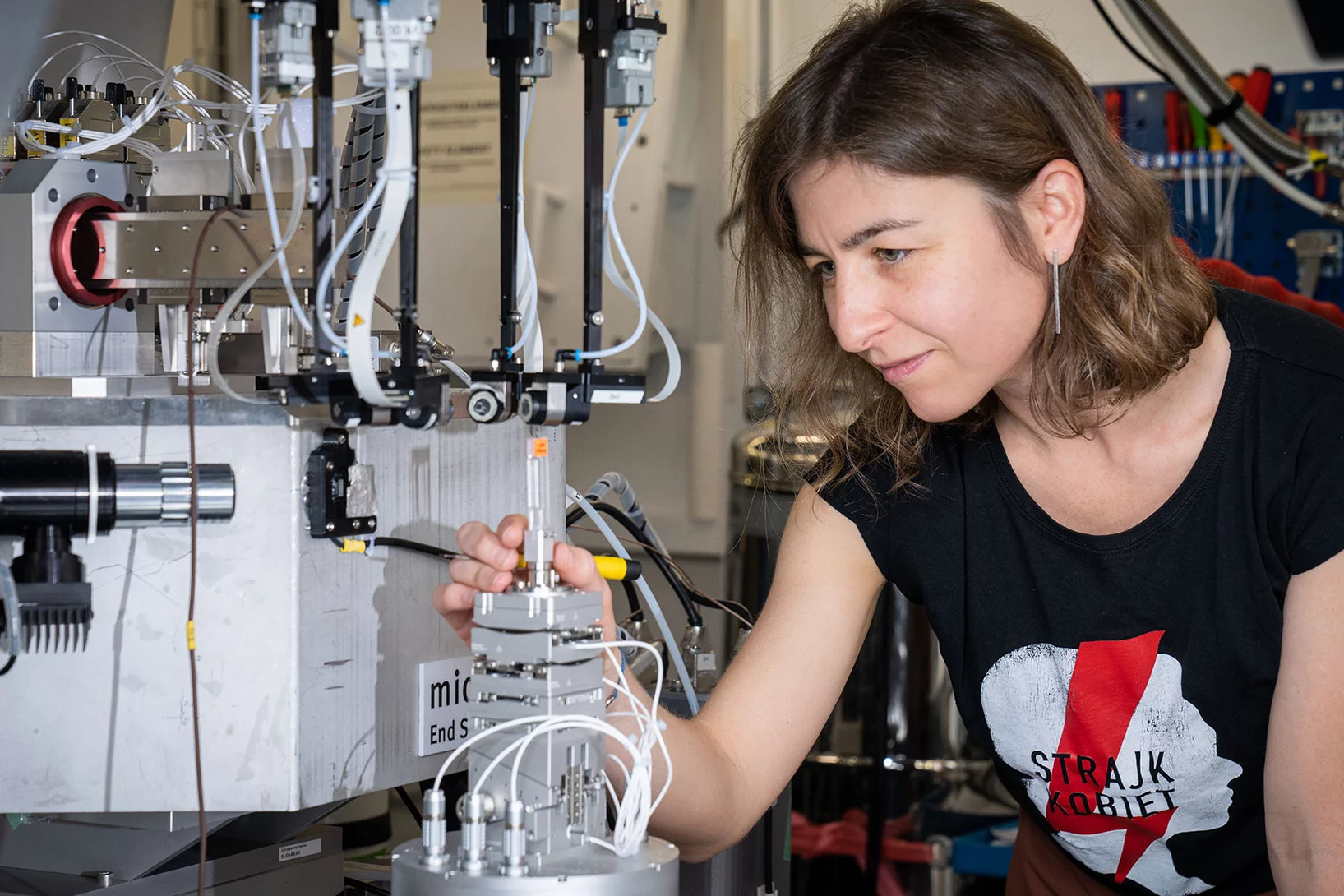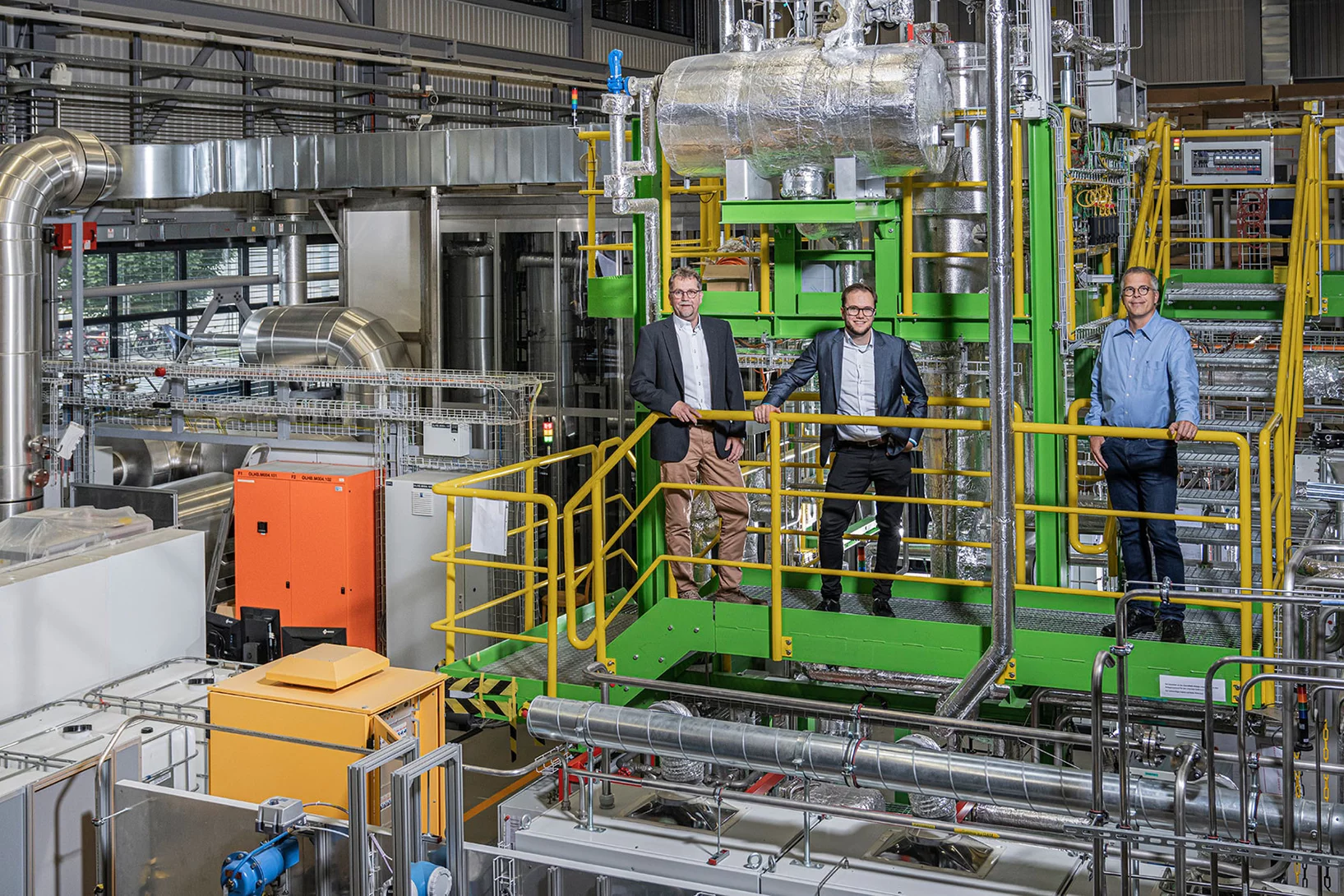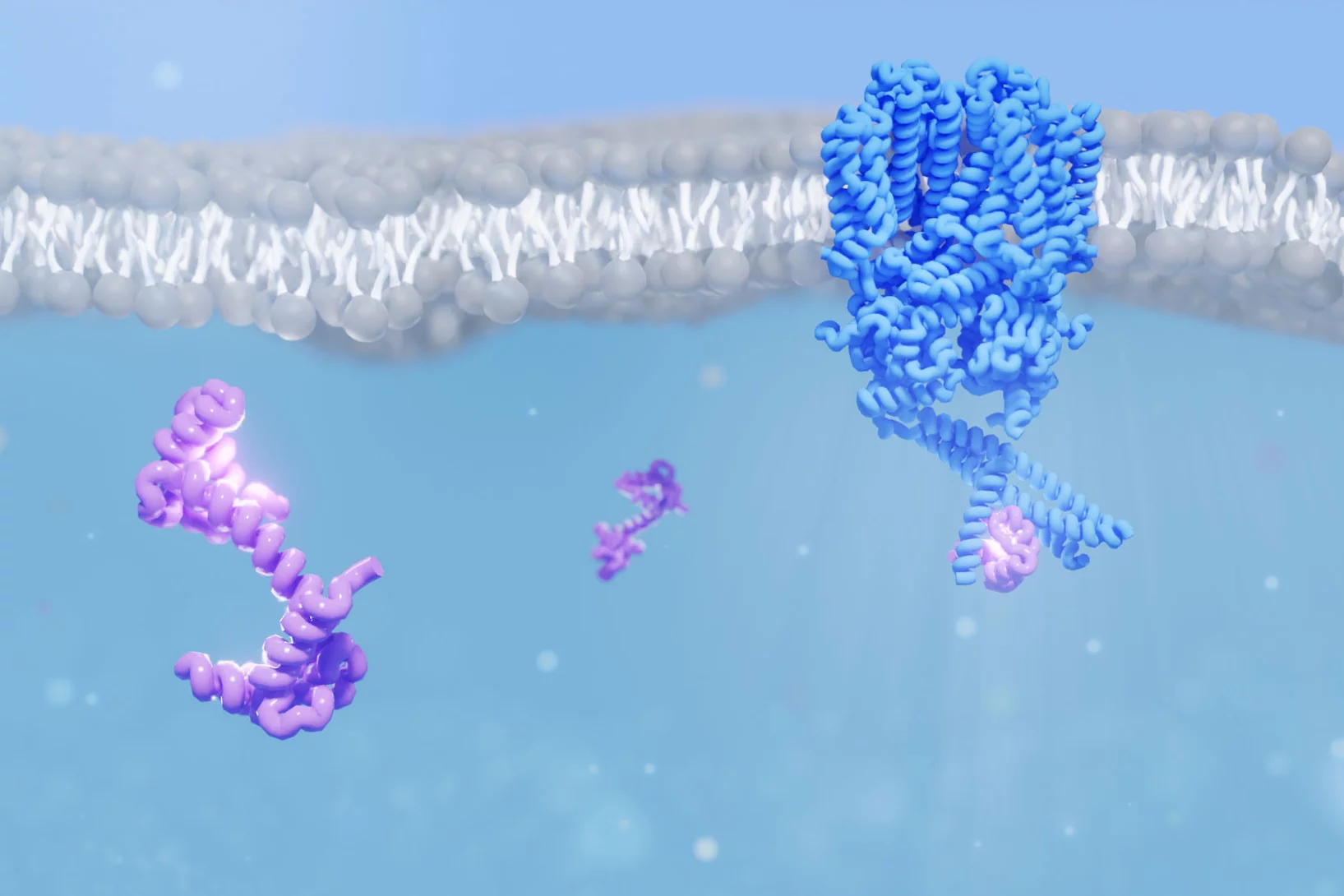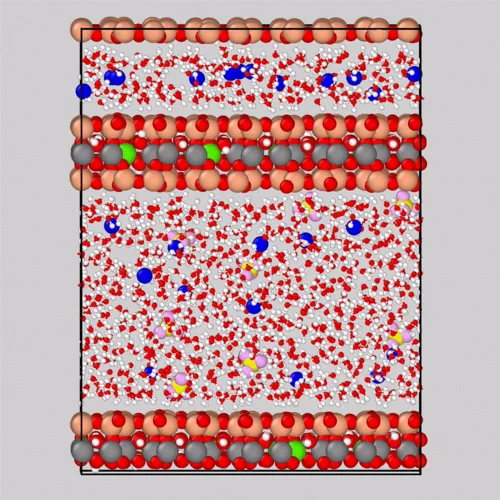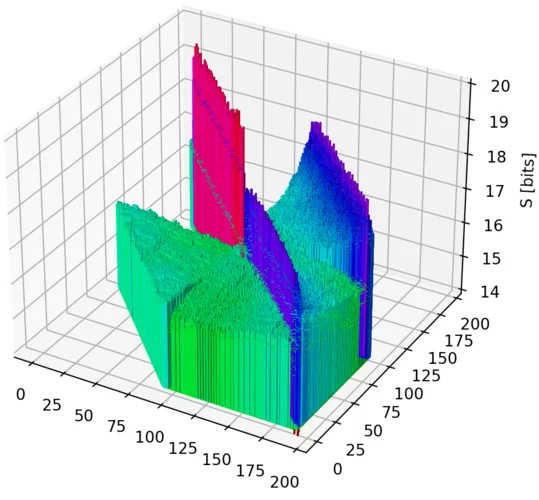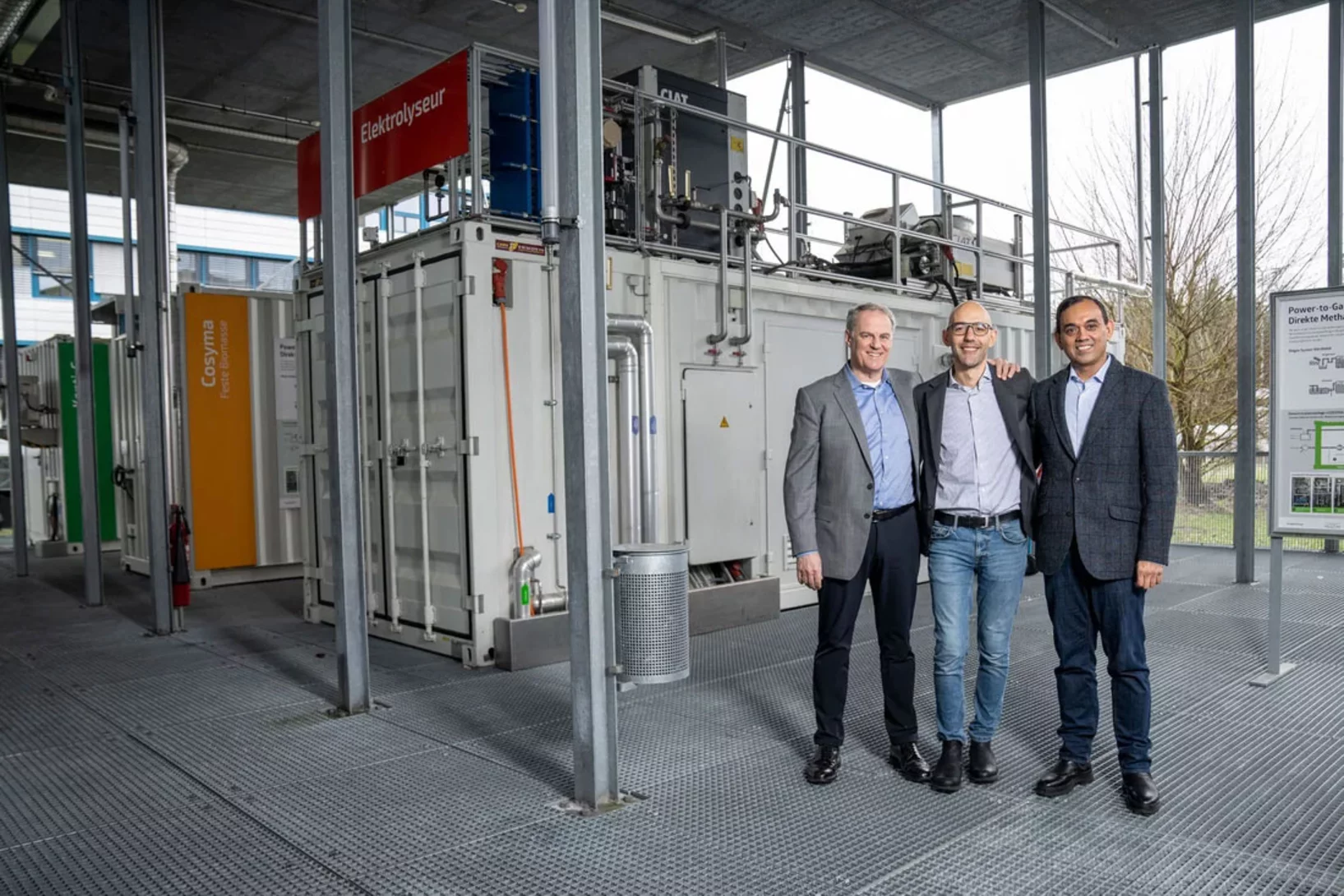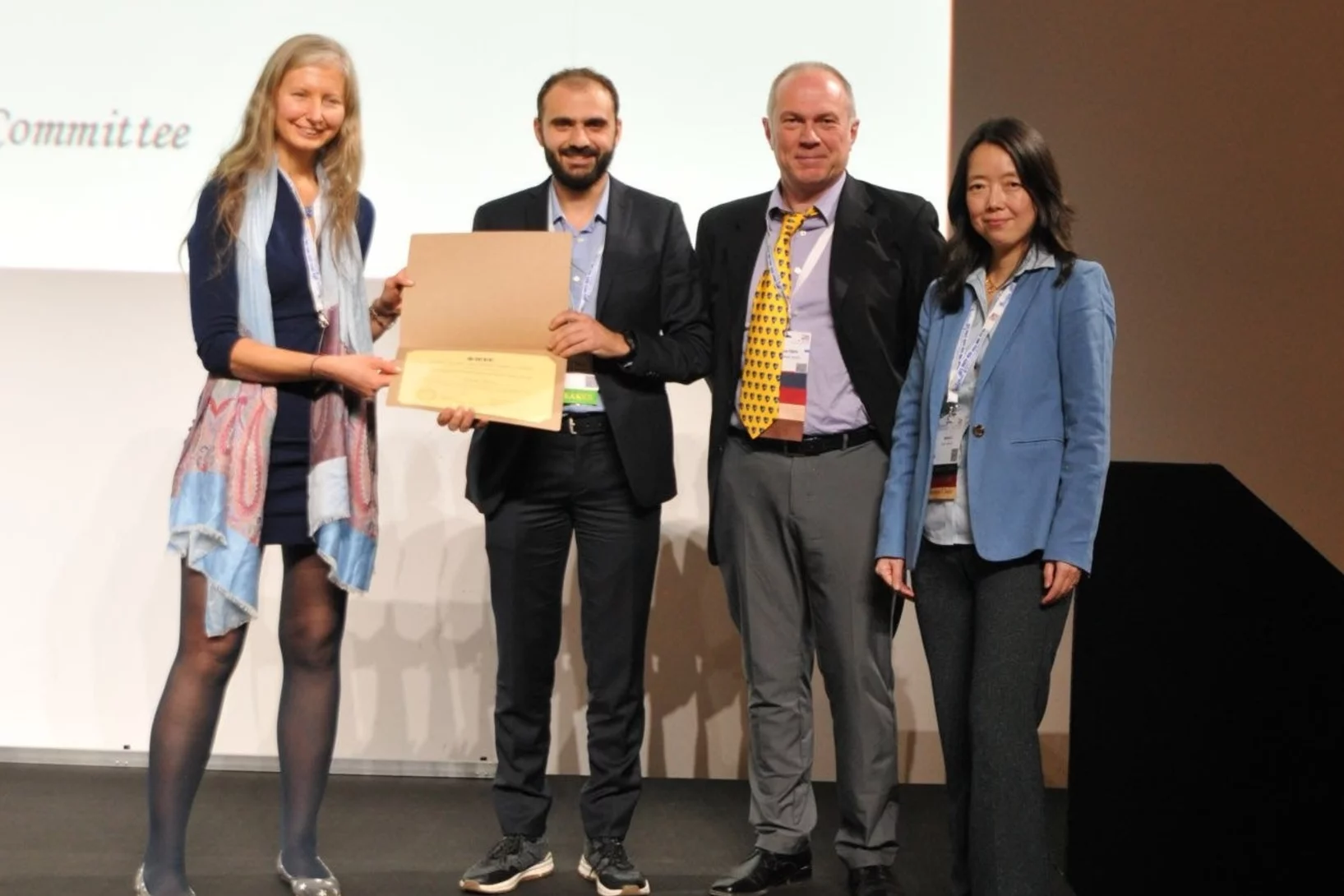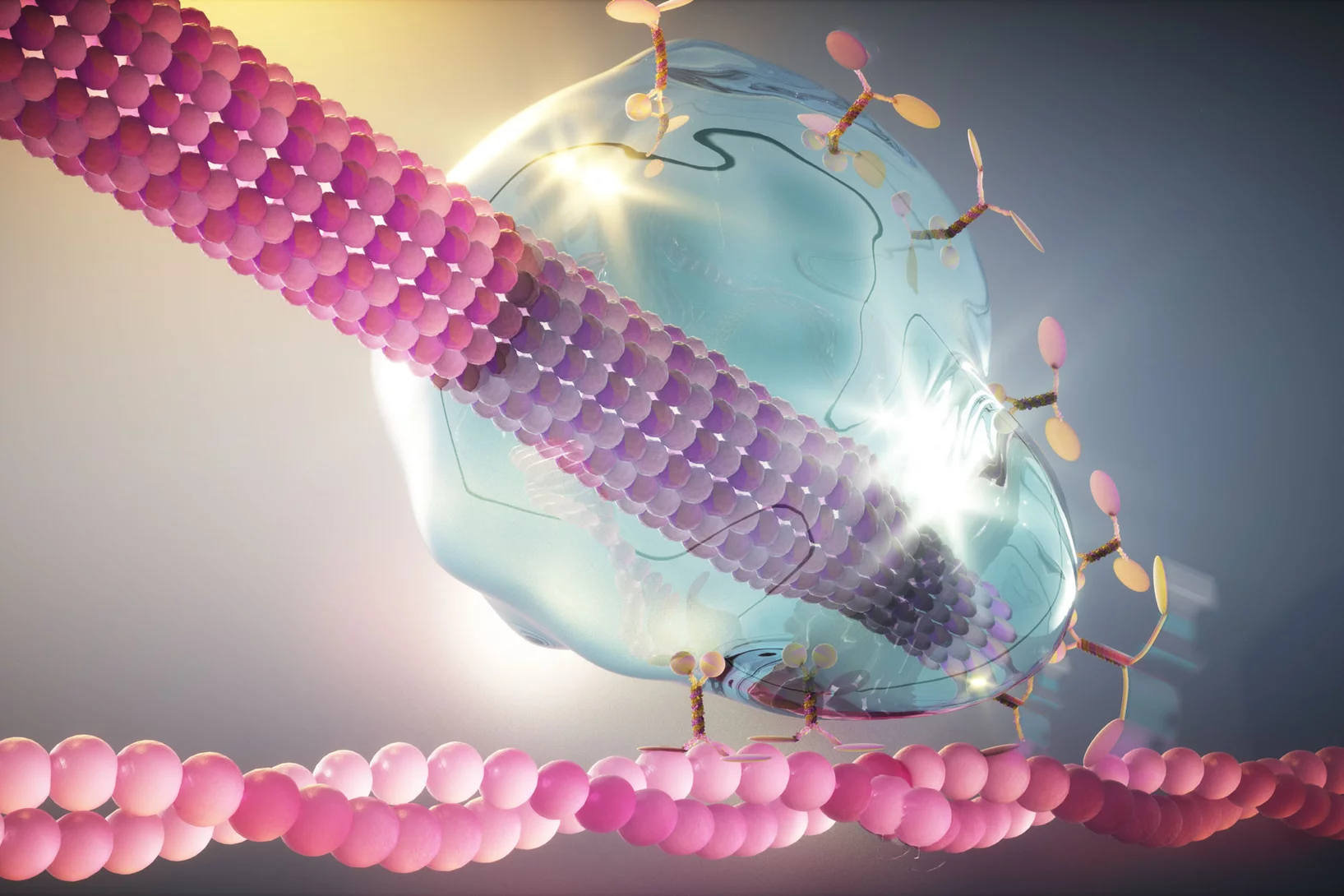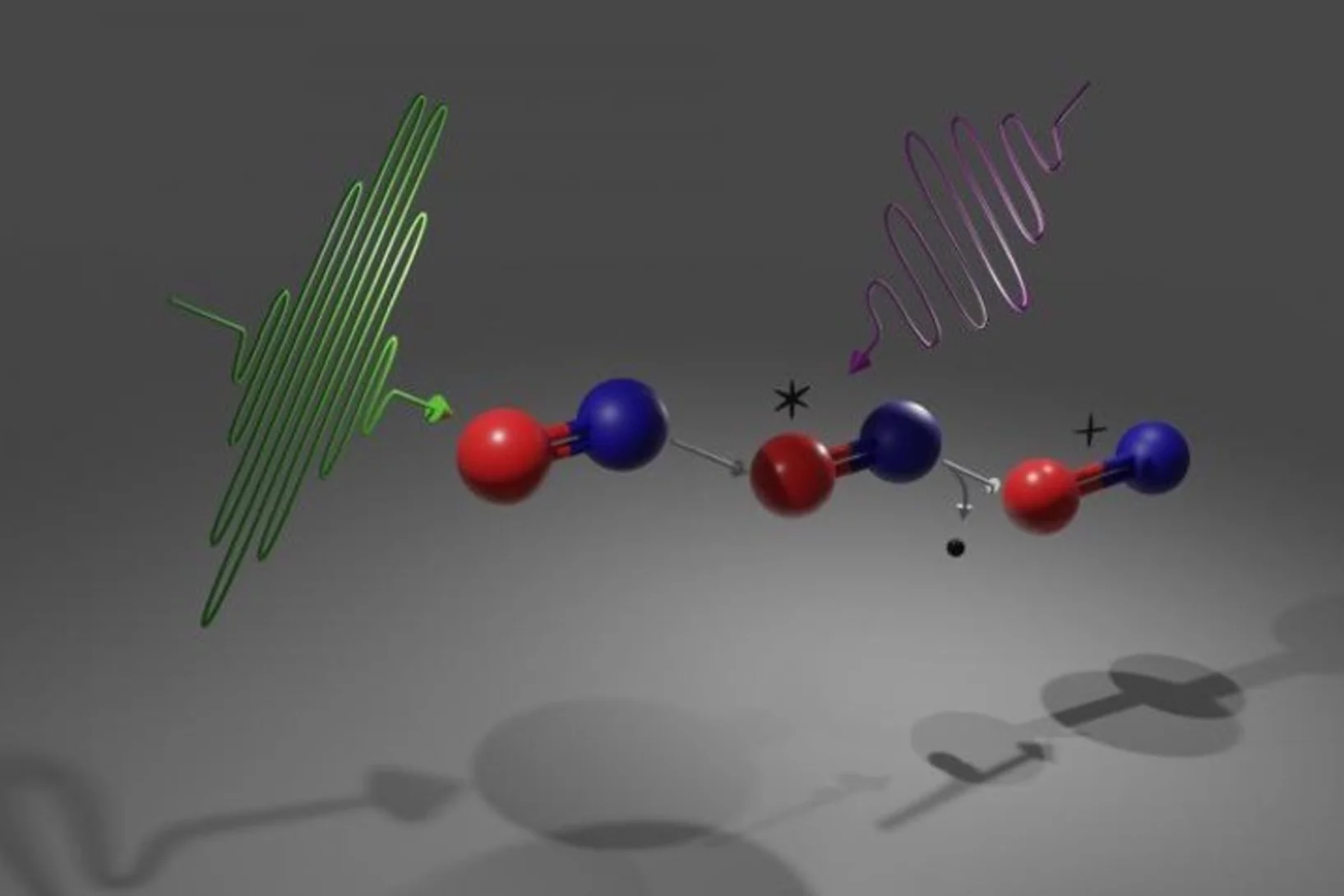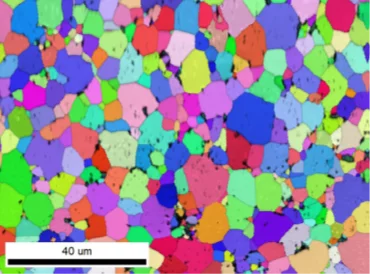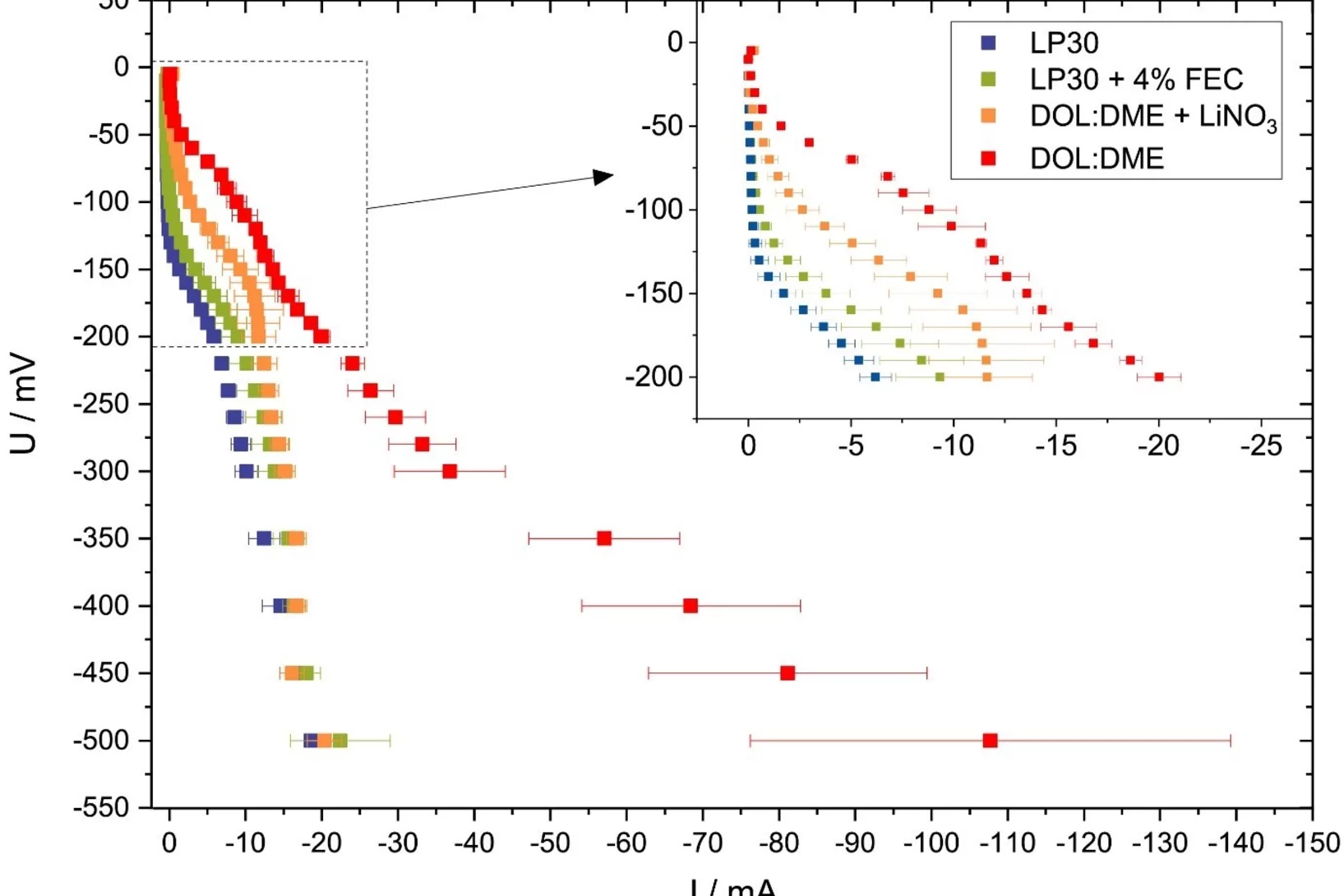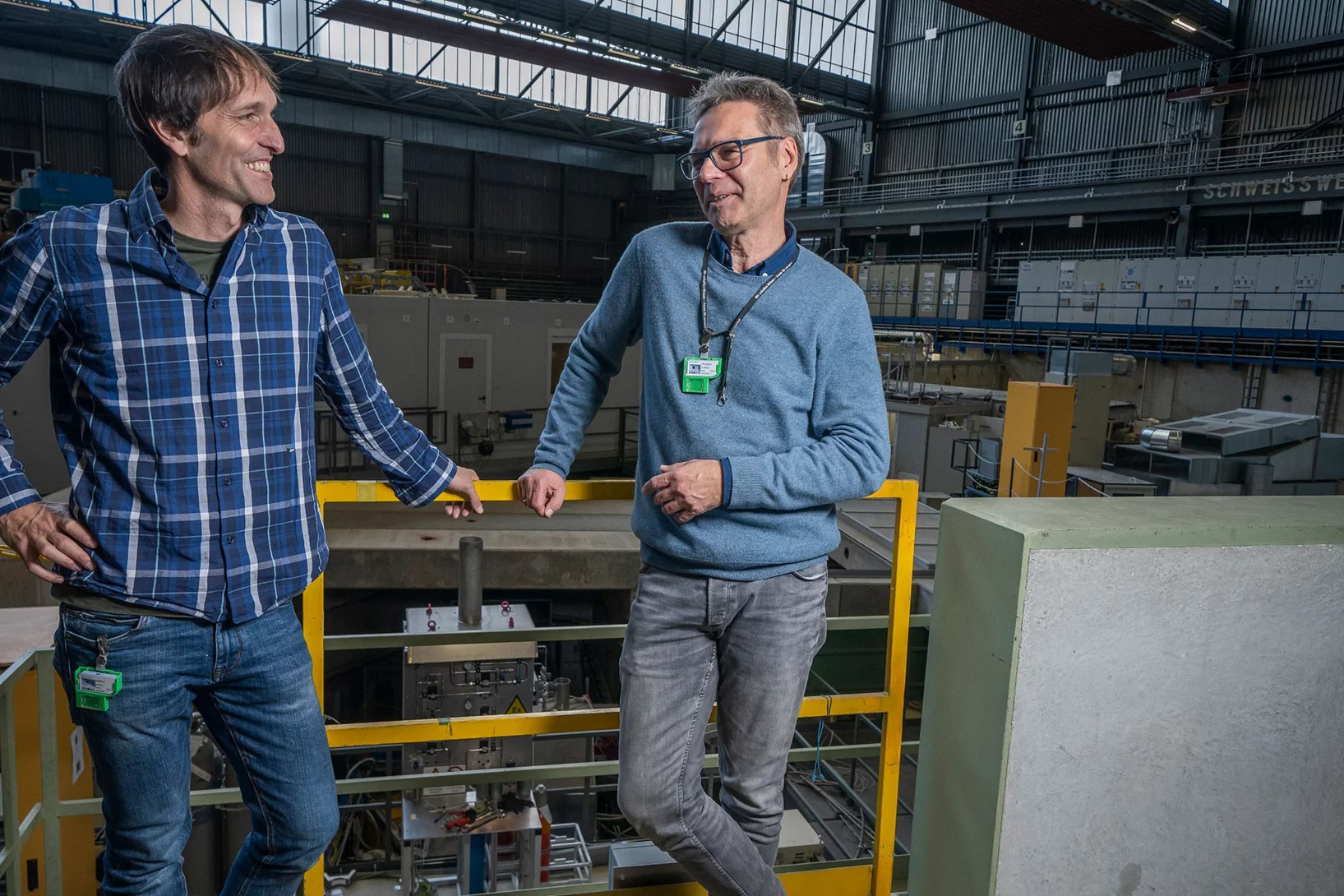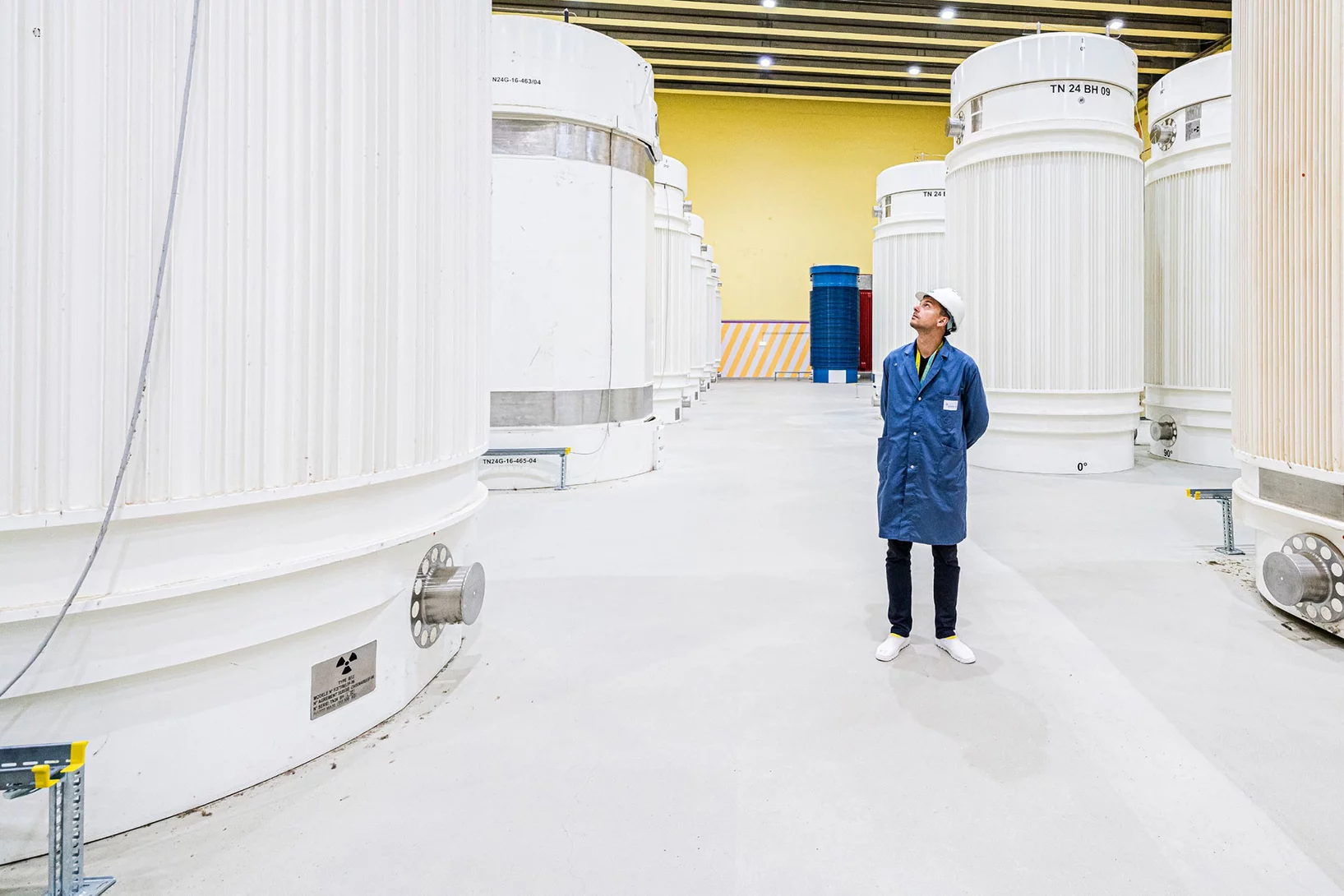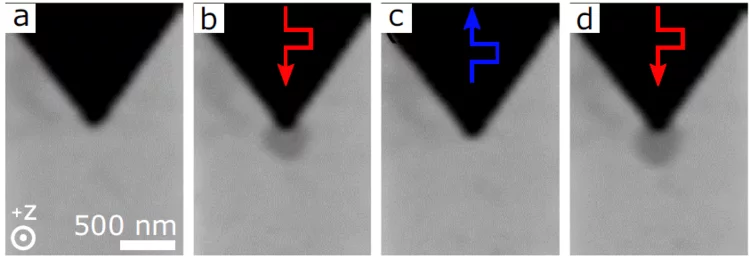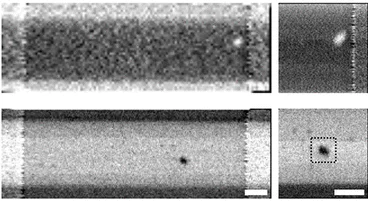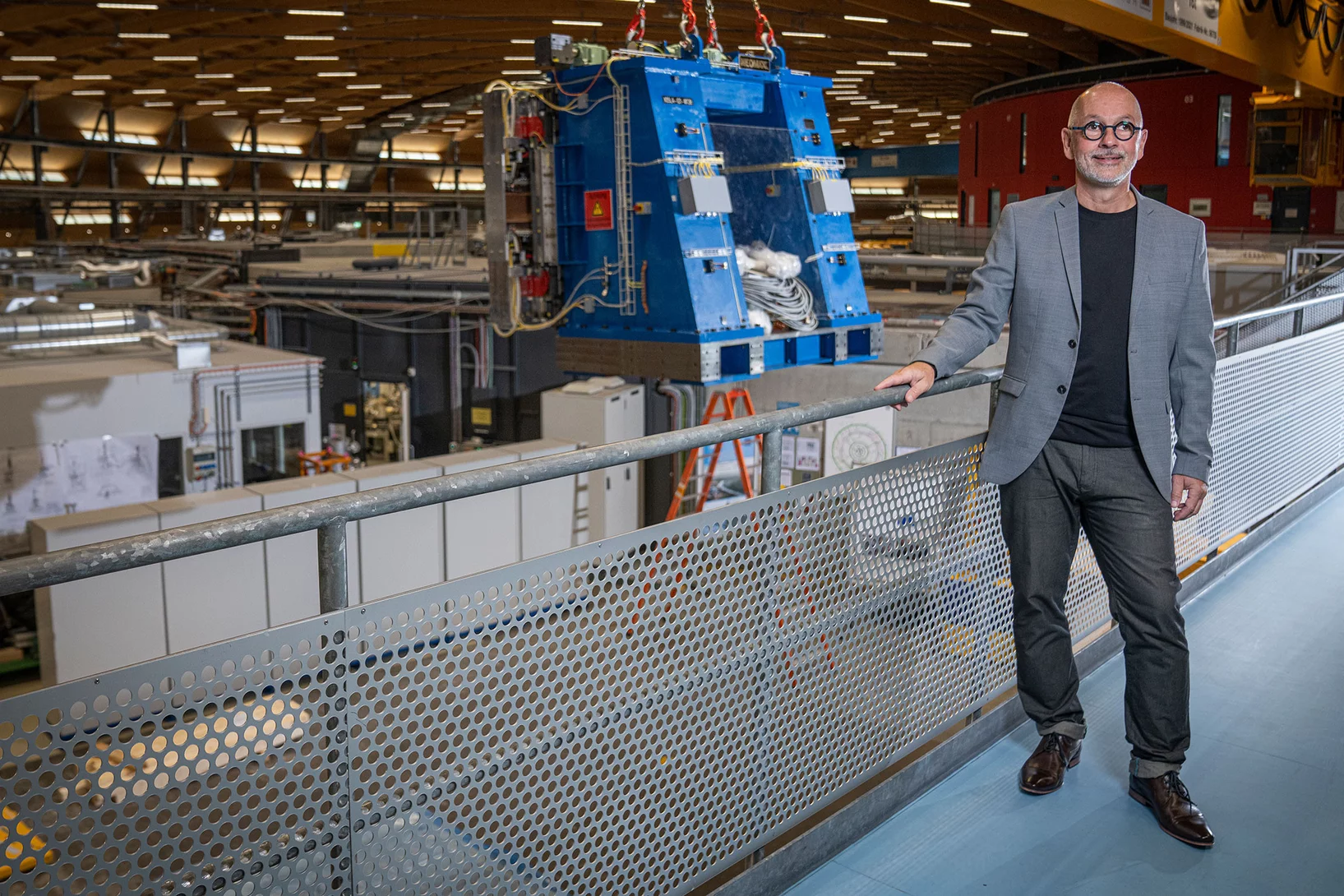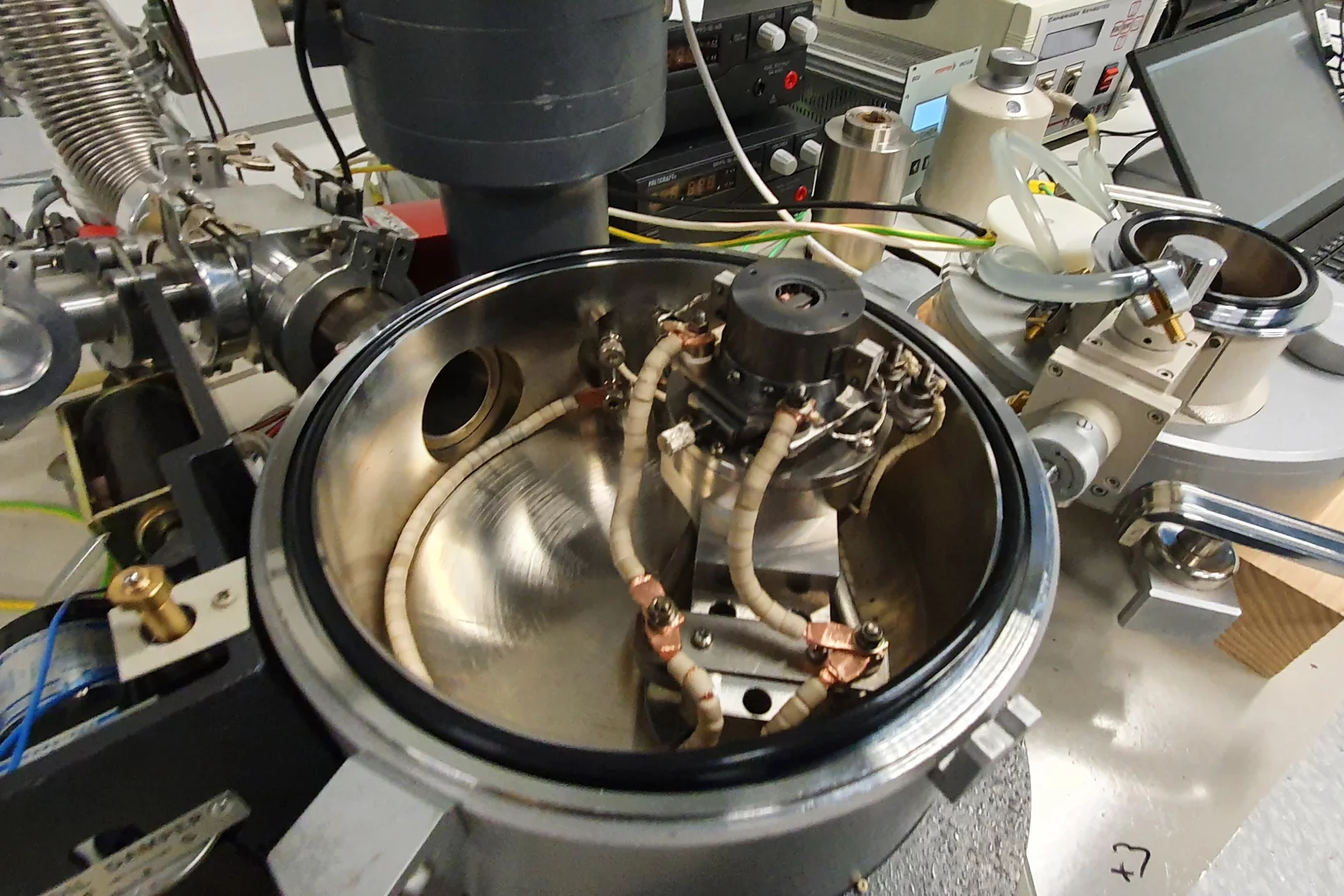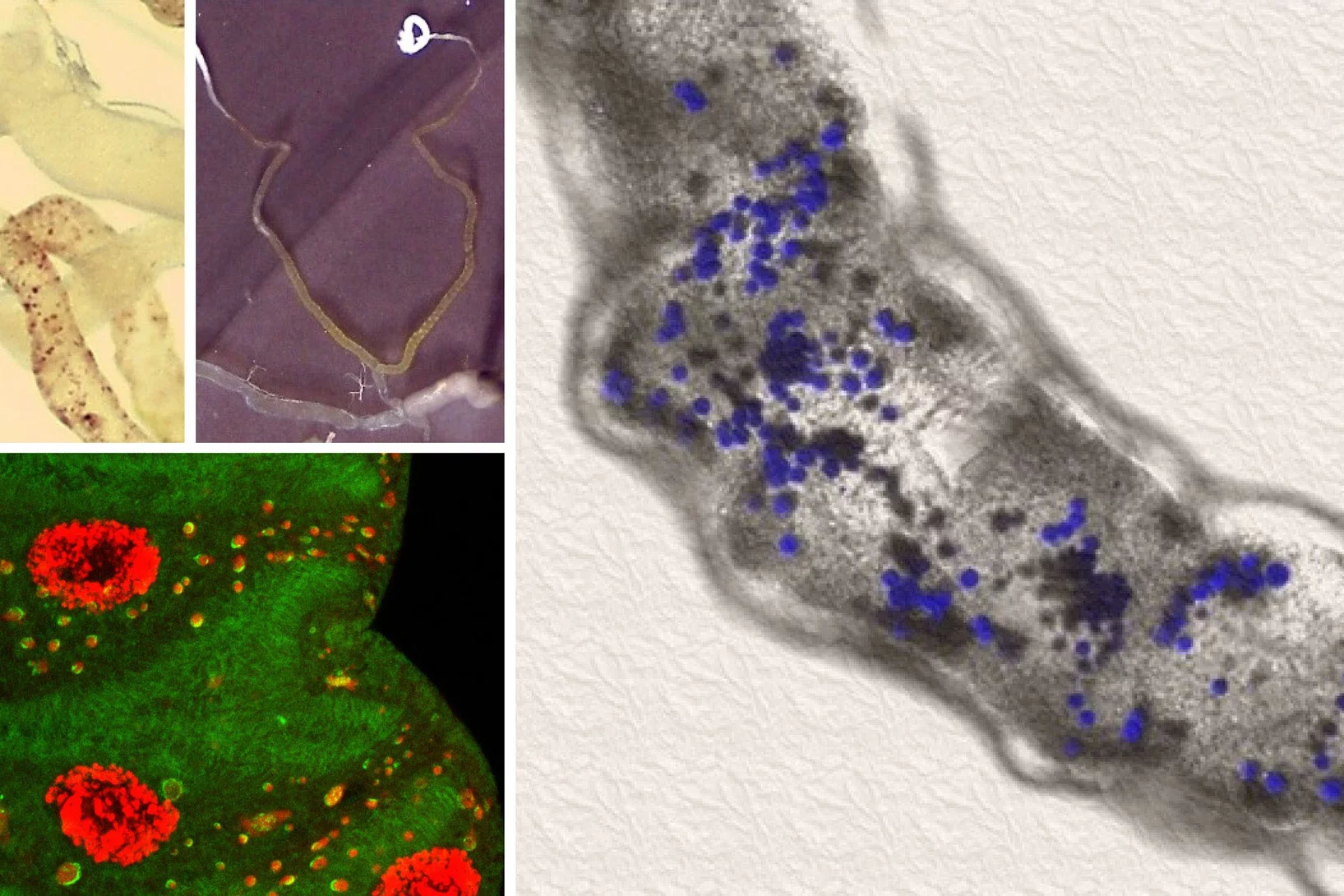Hunting for the radius of a proton
0.000 000 000 000 840 87 (39) metres – scientists working at PSI have come up with this astonishing figure for the radius of a proton.
X-rays look at nuclear fuel cladding with new detail
Micro-beam measurements at the Swiss Light Source SLS give insights into the crystal structure of hydrides that promote cracks in nuclear fuel cladding.
Methane as an energy store
Researchers at PSI and the start-up AlphaSYNT are working together on a solution for efficiently storing energy.
Always on the pulse of time
Presenting two picture galleries to mark the 35th anniversary of the Paul Scherrer Institute PSI.
Calcium sensor helps us to see the stars
New insight into how the protein calmodulin interacts with an ion channel in the eye could explain how our eyes achieve remarkable sensitivity to dim light.
Mobility of Dissolved Gases in Smectite under Saturated Conditions
Mobility of water, sodium and gas molecules within a smectite nanopore
Various gases are produced by metal corrosion and organic material degradation in deep gelological repository for nuclear waste. To ensure repository safety, it's important to demonstrate that gases can be dissipated by diffusion in host rocks and prevent pressure buildup in repository near field. Smectite mineral particles form a pore network that is usually saturated with water, making gas diffusion the primary transport mechanism. Molecular simulations have shown that the diffusion of gases through the pore network depends on various factors, including pore size and temperature. For instance, smaller pores and lower temperatures tend to reduce gas diffusion. Interestingly, hydrogen and helium have been found to diffuse faster than argon, carbon dioxide, and methane, possibly due to interactions with the clay surface and water molecules. Ultimately, the diffusion coefficients for different gases and pore sizes can be predicted using an empirical relationship, which is useful for macroscopic simulations of gas transport.
Approximate Computing for Nuclear Reactor Simulations
During the last decades, computing power has been subject to tremendous progress due to the shrinking of transistor size as predicted by Moore’s law. However, as we approach the physical limits of this scaling, alternative techniques have to be deployed to increase computing performance. In this regard, the next big advance is envisioned to be the usage of approximate computing hardware based on field-programmable gate arrays and/or digital-analogue in-memory circuits. Such approximate computing can provide disproportional gain (x1000) in energy efficiency and/or execution time for acceptable loss of simulation accuracy. This could be highly beneficial in order to accelerate computational intensive simulations such as reactor core analyses with higher resolution multi-physics models. On the other hand, the execution of programming codes on low-precision hardware may result in inadequate outcomes due to quality degradation and/or algorithm divergence. To address these questions, studies on the stability and the performance of advanced reactor simulation algorithms as function of reduced floating-point arithmetic precision are being conducted at the laboratory for reactor physics and thermal-hydraulics. Results obtained so far indicate a large room for the acceleration of nuclear engineering applications using mixed-precision hardware. Therefore, research is now being enlarged towards assessing multiprecision computing methods for reactor core simulations with higher spatial resolution.
A greener alternative for aviation fuel
Air travel with no carbon footprint – PSI and the Metafuels AG develop a new technology to produce sustainable aviation fuel.
IEEE Early Career Award 2022
For contributions to the development of detectors for XFELs and specifically for their verification, characterization, and calibration
The best of both worlds
Annalisa Manera works as a nuclear researcher at PSI and as a professor at ETH Zurich. A portrait.
The clever glue keeping the cell’s moving parts connected
Optimised by nature over 100 million years of evolution, this smart liquid provides a crucial coupling that ensures cell division correctly proceeds.
Radionuclides for personalised medicine
TATTOOS is part of the upgrade project IMPACT. Roger Schibli explains its importance for the future of cancer treatment.
“A jewel we must treasure”
HIMB is one of the two parts of the upgrade project IMPACT. Klaus Kirch speaks about the plans.
Preparing for energy shortages and blackouts
Peter Burgherr is a risk researcher at PSI. In this interview he talks about possible power shortages in the coming winter and how to prepare for them.
Tracking chemical bond changes with element selectivity and in real time
X-ray photoelectron spectroscopy probes the chemical environment in a molecule at a specific atomic site. Now the concept is extended with a site selective trigger to follow chemical bond changes as they occur on the femtosecond time scale.
A unique environment for research on highly radioactive materials
PSI has a unique (worldwide) environment for the investigation of highly radioactive / toxic materials:
> Materials (different fuel types, very high burn-up, different cladding materials, materials activated in SINQ).
> The hot lab with advanced tools for microsample analysis and preparation.
> The large-scale equipment for advanced material analysis.
This unique combination at PSI allows us to meet the needs of our industrial partners to improve plant safety / efficiency, up to fundamental research.
The quantitative distribution of fission products over the cross-section of a pellet with a shielded electron probe microanalyzer (EPMA) used for verification analysis of the material behavior to validate the model. In this context, Xe behavior during transients/failure (LOCA, RIA) is an important safety parameter that can’t be measured with the EPMA at the periphery. Microstructural EBSD investigations on a microsample extend the information horizon, which is deepened at the microXAS beamline by detailed X-ray analyses.
Versatile and Fast Methodology for Evaluation of Metallic Lithium Negative Battery Electrodes
Evaluating potential electrolyte candidates is typically a lengthy procedure requiring long-term cycling experiments. To speed this process up, we have investigated potentiostatic lithium plating as a potential method for fast electrolyte suitability investigation. The applications of this methodology is not limited to liquid electrolytes, - effects of solid-state electrolytes, coatings, and other modifications can be readily assessed.
Making sense of the muon’s misdemeanours
An exotic atom called muonium could explain why muons won’t stick to the rules, believe researchers using the Swiss Muon Source at Paul Scherrer Institute PSI.
Waiting for the repository
How computer simulations are helping ensuring a safe and efficient transfer of used nuclear fuel from temporary dry storage to its final resting place deep underground.
ETSON Workshop at PSI Towards Artificial Intelligence Informed Nuclear Safety Assessments
Data science (DS) and artificial intelligence (AI) methods opens up an immense range of new opportunities and challenges in the context of continuously enhancing the complex methodologies used as basis for nuclear safety assessments. To this aim, following discussions in the ETSON Technical Board on Reactor Safety, the PSI laboratory for reactor physics and thermal-hydraulics organized on October 20-21, 2022, an international workshop to review and discuss DS/AI within ETSON, the network of European research and expert organizations providing scientific support to national nuclear authorities. With close to 40 participants, the workshop, organized as a hybrid meeting, allowed to put in evidence that similarly as at PSI, a wide and growing range of developments with integration of DS/AI methods are currently taking place in order to complement and/or inform nuclear safety analysis methodologies.
“More objectivity would be helpful”
The current energy debate could do with more facts and less gut feeling – argue Thomas J. Schmidt, renewables expert, and Andreas Pautz, nuclear energy specialist.
Award winning work on high-resolution X-ray radiography methods for boiling experiments at high pressure.
Light Water Reactors (LWRs) such as the ones operating in Switzerland work at relatively high temperatures and pressures. As a consequence, thermal-hydraulics experiments investigating relevant LWRs phenomena at prototypical conditions require test sections with relatively thick steel walls. This poses significant challenges for the implementation of suitable instrumentation to capture phenomena of interest, such as the flow regimes during transition from liquid to steam. The characterization of flow regimes in the presence of boiling is rather complex, and their better understanding would allow to develop mathematical modeling tools that can be used to optimize equipment and better assess safety margins. To perform in-situ measurements of the boiling process under high-pressure conditions, the team of authors from PSI, ETH, and the University of Michigan has developed a new high-fidelity and high-speed imaging system based on x-ray radiography, which provides high-resolution details on the boiling process while being non-intrusive. Since the instrumentation is located outside of the test section, it has also the advantage that can be easily moved to take measurements in different region of the test sections.
Many paths lead to the energy future
How can Switzerland achieve the energy transition? PSI researchers provide answers with a unique computer model.
Nucleation of synthetic antiferromagnetic skyrmions
Magnetic skyrmions stabilized in synthetic antiferromagnets hold promise as nanoscale information carriers in novel non-volatile magnetic memory designs. In this work, scientists in a worldwide collaborative effort have demonstrated the electrically-induced nucleation of magnetic skyrmions in synthetic antiferromagnets, which is a vital stepping stone towards the applicability of these magnetic textures in devices.
Ferrimagnetic Skyrmions: fast and straight
Scientists have demonstrated, through magnetic X-ray microscopy, that magnetic skyrmions stabilized in ferrimagnetic heterostructures can be displaced by electrical currents at high velocities, and exhibit low deflection angles, proving that ferrimagnetic skyrmions are good candidates for fast skyrmionic devices.
A piece of PSI history sets off on a long journey
Off to new shores – a high-tech component is on its way from PSI to Australia by sea. In future, it will be deployed at the Australian Synchrotron in Melbourne.
The Effects of Hydrophobicity Treatment of Gas Diffusion Layer on Ice Crystallization in PEFCs
Water management is crucial to the successful cold-start in polymer electrolyte fuel cells (PEFCs). The sudden freeze of supercooled water blocks the reactant gas in the cathode and causes rapid voltage failure. In this work, we statistically evaluated the effects of the gas diffusion layer (GDL) substrate, size, saturation, and the coating loads and methods of hydrophobic polymer on the freezing probability of supercooled water by differential scanning calorimetry (DSC).
Entanglement between Muon and I > 1/2 Nuclear Spins as a Probe of Charge Environment
We report on the first example of quantum coherence between the spins of muons and quadrupolar nuclei. We reveal that these entangled states are highly sensitive to a local charge environment and thus, can be deployed as a functional quantum sensor of that environment. The quantum coherence effect was observed in vanadium intermetallic compounds which adopt the A15 crystal structure, and whose members include all technologically pertinent superconductors. Furthermore ...
Poster Prize 2022: First Prize (AKB Foundation) of the SAPhW Poster Award at the Swiss Pharma Science Day 2022
Rahel Wallimann, PhD student in the “Nuclide Chemistry Group”, received the first prize (AKB Foundation) of the SAPhW Poster Award at the Swiss Pharma Science Day 2022.
Hydrogen-induced softening effect in zirconium alloys
The fuel used for nuclear energy production is normally enclosed in zirconium-based cladding tubes that constitute the first barrier between the radioactive material and the environment. In water-moderated reactors, cladding tubes tend to corrode, generating hydrogen as side product. The study of the hydrogen embrittlement in zirconium alloys is of high relevance for the industry.
Depending on temperature, local hydrogen concentration, and local stress conditions, different hydrogen-induced embrittlement mechanisms can be active in the cladding material: in certain conditions hydrogen in solid solution might cause material softening through a mechanism known as hydrogen enhanced localized plasticity (HELP).
With the goal of determining the conditions necessary to activate the HELP effect in zirconium alloys, samples have been evaluated by different micro-mechanical and macro-mechanical techniques. Results highlight the importance of the interplay between solid solution hydrogen and hydrides on the hardness and yield point of the tested materials.
PSI’s own brand
Components made to order in PSI’s express workshop
PSI at the Swissmechanic Business Day 2022
"ENERGIE - Geht der Schweiz der Strom aus?"
When: 6. September 2022, 9am - 6pm
Where: Halle 622 Zürich-Oerlikon
Language: German
On the Swissmechanic Business Day various renowned speakers offer perspectives from on the topic "ENERGY - Is Switzerland running out of electricity?". Innovations and products will be exhibited, including the Paul Scherrer Institute's ESI Cube - a mobile exhibit of the "Energy System Integration" experimental platform, which is available to research and industry partners. The Cube makes the complex topic of energy storage and conversion comprehensible in a playful way.
Industry decision-makers meet to hear the technical presentations and inform themselves about the newest products and innovation.
The Business Day is an excellent opportunity to get informed about highly relevant and concurrent topics such as the securing of the Swiss energy supply in the years to come or the security of nuclear energy. Make use of this opportunity to network and join!
More information about the detailed program, speakers and event registration can be found here: https://www.swissmechanic.ch/business-day
Deadline for registration: August 16th 2022
The chemical complex that regulates body zinc storage
Zinc deficiency compromises the immune system and is a global public health problem. Through experiments at the Swiss Light Source SLS and BESSYII, researchers gained new insights into zinc storage, with implications for understanding COVID-19 severity.


